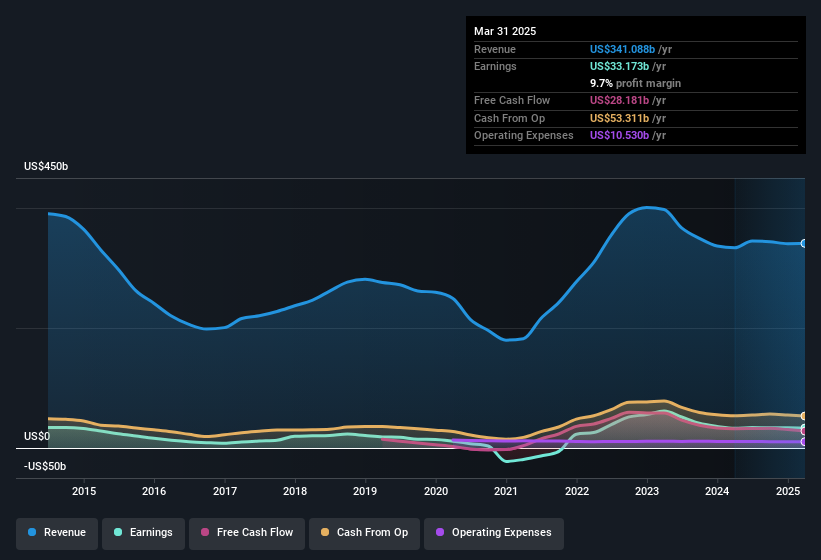
Exxon Mobil Corporation's (NYSE:XOM) healthy profit numbers didn't contain any surprises for investors. We think this is due to investors looking beyond the statutory profits and being concerned with what they see.
We check all companies for important risks. See what we found for Exxon Mobil in our free report.
In order to understand the potential for per share returns, it is essential to consider how much a company is diluting shareholders. In fact, Exxon Mobil increased the number of shares on issue by 9.3% over the last twelve months by issuing new shares. That means its earnings are split among a greater number of shares. Per share metrics like EPS help us understand how much actual shareholders are benefitting from the company's profits, while the net income level gives us a better view of the company's absolute size. Check out Exxon Mobil's historical EPS growth by clicking on this link.
A Look At The Impact Of Exxon Mobil's Dilution On Its Earnings Per Share (EPS)
As you can see above, Exxon Mobil has been growing its net income over the last few years, with an annualized gain of 29% over three years. However, net income was pretty flat over the last year with a miniscule increase. In contrast, earnings per share are actually down a full 7.3%, over the last twelve months. Therefore, the dilution is having a noteworthy influence on shareholder returns.
In the long term, if Exxon Mobil's earnings per share can increase, then the share price should too. However, if its profit increases while its earnings per share stay flat (or even fall) then shareholders might not see much benefit. For the ordinary retail shareholder, EPS is a great measure to check your hypothetical "share" of the company's profit.
That might leave you wondering what analysts are forecasting in terms of future profitability. Luckily, you can click here to see an interactive graph depicting future profitability, based on their estimates.
Our Take On Exxon Mobil's Profit Performance
Each Exxon Mobil share now gets a meaningfully smaller slice of its overall profit, due to dilution of existing shareholders. Therefore, it seems possible to us that Exxon Mobil's true underlying earnings power is actually less than its statutory profit. Nonetheless, it's still worth noting that its earnings per share have grown at 25% over the last three years. At the end of the day, it's essential to consider more than just the factors above, if you want to understand the company properly. Ultimately, this article has formed an opinion based on historical data. However, it can also be great to think about what analysts are forecasting for the future. So feel free to check out our free graph representing analyst forecasts.
This note has only looked at a single factor that sheds light on the nature of Exxon Mobil's profit. But there are plenty of other ways to inform your opinion of a company. Some people consider a high return on equity to be a good sign of a quality business. So you may wish to see this free collection of companies boasting high return on equity, or this list of stocks with high insider ownership.
Have feedback on this article? Concerned about the content? Get in touch with us directly. Alternatively, email editorial-team (at) simplywallst.com.
This article by Simply Wall St is general in nature. We provide commentary based on historical data and analyst forecasts only using an unbiased methodology and our articles are not intended to be financial advice. It does not constitute a recommendation to buy or sell any stock, and does not take account of your objectives, or your financial situation. We aim to bring you long-term focused analysis driven by fundamental data. Note that our analysis may not factor in the latest price-sensitive company announcements or qualitative material. Simply Wall St has no position in any stocks mentioned.